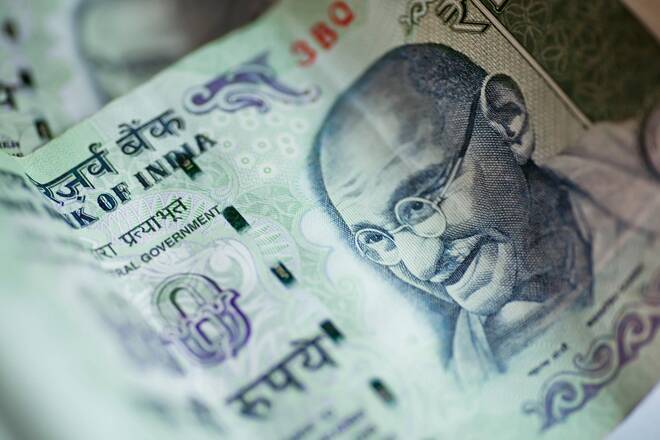Advertisement
Advertisement
Not only the Turkish Lira – The Indian Rupee Hits All Time Low
By:
The Indian Rupee is just one of several emerging market currencies to come under pressure in the wake of the Turkish Lira’s collapse. However, the Rupee may be vulnerable to further weakness regardless of the weakness of the Lira.
This week the Indian Rupee crossed 70 for the first time in its history. India’s currency crossed the psychological level on Monday and traded as high as 70.80 on Wednesday. The Rupee is just one of several emerging market currencies to come under pressure in the wake of the Turkish Lira’s collapse. However, the Rupee may be vulnerable to further weakness regardless of the weakness of the Lira.
The Turkish Lira is now down about 35% since the beginning of the year. The Argentinian Peso has lost close to 37% of its value in 2018 after the country was forced to turn to the IMF in May. Other emerging market currencies losing ground are the Indonesian Rupee, the Philippine Peso, the Brazilian Real and the South African Rand.
However, not all emerging market currencies are losing ground. The Mexican Peso has gained ground in 2018, and most South East Asian and East Asian currencies are holding their value.
Almost all the countries that have seen their currencies come under pressure are those with wide, or widening, current account deficits. In India’s case, analysts have been worried about the deficit for some time, and these fears were confirmed when the commerce ministry announced on Tuesday that it had hit a five year high of $18 billion in July.
The current account deficit is growing due to rising oil prices and a surging USD, and FDI and foreign institutional investment flows are not high enough to offset the widening deficit. The rising oil price alone could see India’s oil import bill growing by $26 billion in 2018 and 2019, and is unfortunately likely to offset any export gains due to the weaker currency.
The central bank has also raised rates twice, in June and August, the first rate hikes in four years. It may hike rates further if the currency continues to weaken, though it will be cautious about doing so if economic growth slows.
India ratings and research have also just lowered its growth forecast for the year to 7.2%, from 7.4% sighting rising inflation due to oil import costs.
Going forward, the most important factors to watch will be the oil price and the strength of the USD. While developments in the domestic economy will play a part, they are likely to be outweighed by these external factors. Some analysts are forecasting the Rupee to reach between 72 and 73.55 by year-end, based on current fundamentals – but these can change rapidly.
If current fears over emerging market currencies ease, the Rupee will probably retrace to an extent. Short term support may come into play at 69.70, and if that doesn’t hold, the breakout level at 69 could be retested. It seems very unlikely that the currency would strengthen below that level without a substantial change in the economic environment. A likely trading range for the remainder of 2018 may be 69.70 to 72.
While the selloff of the Turkish Lira has played its part in the weakness we are seeing in the Rupee, fundamentals are equally to blame. The Rupee is not one of the currencies that is most influenced by emerging market sentiment and domestic factors rather than speculation play more of a role in the price.
Traders should, therefore, pay as much attention to oil prices and domestic developments as they do to sentiment or technical levels.
About the Author
Richard Bowmanauthor
Richard has over 18 years’ experience in asset management, stockbroking, financial media and systematic trading. He covers global equities, crypto assets, ETFs, currencies, and indices.
Advertisement
